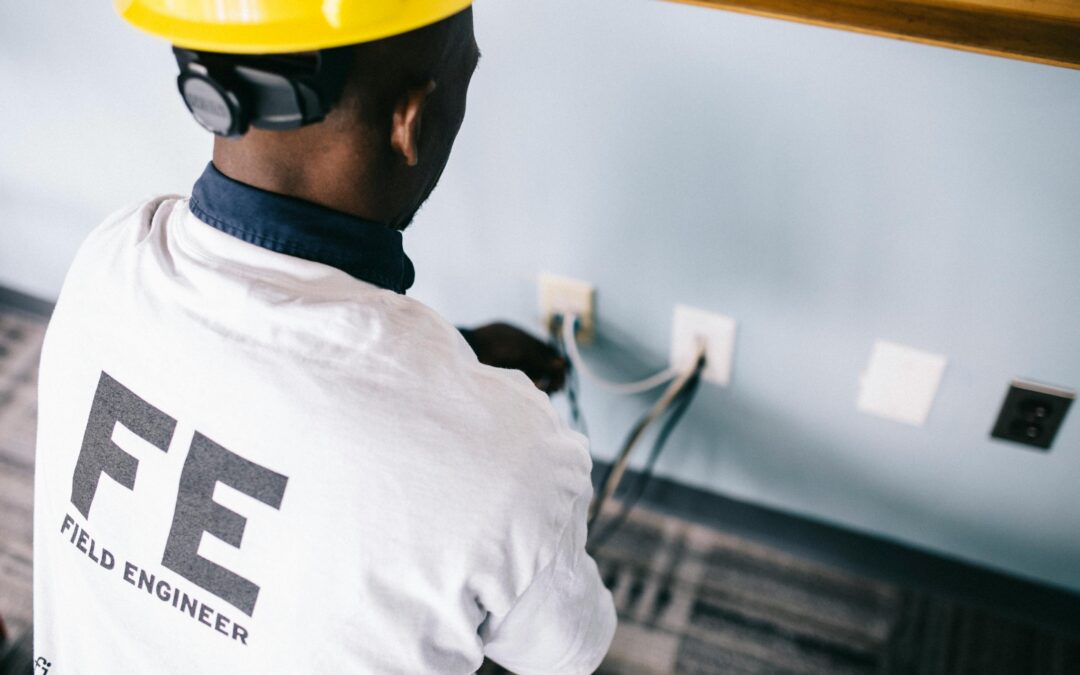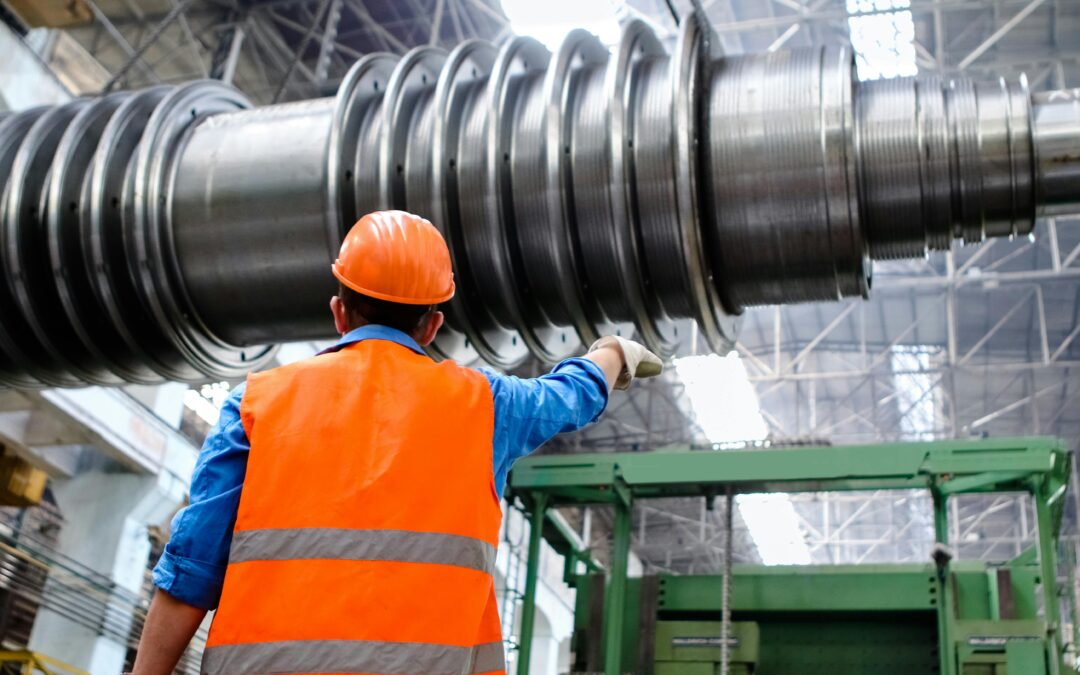Introduction: Why Industrial Electricians Are Essential
Industrial sites depend on reliable electrical systems to keep operations running smoothly. From powering heavy machinery to maintaining automated systems, industrial electricians play a critical role in ensuring safety, efficiency, and compliance.
But finding the right talent isn’t always easy. Companies must balance tight deadlines with strict safety requirements, making industrial electrician staffing a key solution for project success.
In this article, we’ll cover the skills, licenses, and safety practices every employer should look for when hiring electricians for industrial sites—including why OSHA 30 training and lockout/tagout procedures are non-negotiable.
The Role of Industrial Electricians on Job Sites
Unlike residential or commercial electricians, industrial electricians work in high-risk, high-demand environments such as:
- Manufacturing plants
- Oil and gas facilities
- Power generation stations
- Chemical refineries
- Large-scale construction projects
Their responsibilities include:
- Installing and maintaining electrical systems for heavy equipment.
- Troubleshooting control systems, motors, and high-voltage wiring.
- Following strict safety standards like lockout/tagout to prevent accidents.
- Ensuring compliance with OSHA and NFPA (National Fire Protection Association) codes.
Given these responsibilities, hiring qualified electricians is not optional, it’s essential.
Key Skills Every Industrial Electrician Must Have
Employers looking for industrial electrician staffing should prioritize candidates with both technical expertise and practical problem-solving abilities.
1. Electrical System Installation and Maintenance
Industrial electricians must know how to wire, install, and repair large-scale systems, including switchgear, transformers, and industrial control panels.
2. Troubleshooting and Diagnostics
The ability to quickly diagnose electrical issues minimizes costly downtime and prevents safety hazards.
3. Programmable Logic Controllers (PLCs)
Modern industrial sites rely heavily on automation. Skilled electricians must understand PLC programming and troubleshooting.
4. Lockout/Tagout (LOTO) Knowledge
One of the most critical safety procedures, lockout/tagout, ensures equipment is de-energized before repair or maintenance. Electricians must follow this strictly to avoid injury or fatality.
5. Teamwork and Communication
Industrial electricians often work alongside engineers, supervisors, and safety officers. Strong communication skills improve efficiency and safety compliance.
Licenses and Certifications for Industrial Electricians
Verifying licenses and certifications is one of the most important steps in safe hiring. Employers should look for:
1. State Journeyman or Master Electrician License
Each state requires electricians to hold a license, typically at the journeyman or master level. This ensures compliance with building and safety codes.
2. OSHA 30 Training
The OSHA 30-hour training program is designed for supervisors and workers in hazardous environments. It covers electrical safety, personal protective equipment (PPE), and workplace hazard identification.
Hiring electricians with OSHA 30 training ensures they’re equipped to recognize risks and implement safety measures.
3. NFPA 70E Certification
This certification covers electrical safety standards related to arc flash, shock prevention, and safe electrical work practices.
4. Lockout/Tagout Training
Formal training in lockout/tagout procedures is essential for preventing accidental equipment energization during maintenance.
5. First Aid and CPR Certification
While not always required, this training ensures workers can respond quickly in emergencies.
Safety First: Why OSHA 30 and Lockout/Tagout Matter
Safety is at the core of every industrial site, and electrical hazards are among the most dangerous risks.
OSHA 30: A Foundation for Safer Workplaces
The OSHA 30 program provides advanced training on workplace hazards, emphasizing accident prevention. Workers who complete this training:
- Understand electrical hazard controls.
- Recognize unsafe conditions.
- Promote a strong safety culture on-site.
Lockout/Tagout (LOTO): Protecting Workers’ Lives
Every year, hundreds of workers are injured or killed because machinery wasn’t properly de-energized. LOTO procedures safeguard against these risks by requiring electricians to:
- Power down and isolate energy sources.
- Apply locks and tags to prevent reactivation.
- Verify that equipment is de-energized before work begins.
Employers must confirm that electricians not only know these procedures but also follow them consistently.
How Industrial Electrician Staffing Solves Hiring Challenges
Hiring qualified electricians directly can be time-consuming and risky. That’s why many companies turn to industrial electrician staffing agencies.
Benefits of Staffing Partnerships:
- Access to Pre-Screened Talent – Workers are already vetted for licenses, certifications, and experience.
- Faster Hiring – Agencies maintain a roster of electricians ready for deployment, cutting hiring time from weeks to days.
- Safety Assurance – Many staffing firms verify OSHA 30 and LOTO training before placement.
- Flexible Staffing Models – Employers can hire temporary, temp-to-perm, or direct-hire electricians based on project needs.
By outsourcing the recruitment process, employers can focus on operations while ensuring compliance and safety.
Hiring Checklist: What to Look for in Industrial Electricians
When evaluating candidates, use this checklist:
✅ Valid state electrician license (journeyman or master)
✅ OSHA 30 training completed
✅ Lockout/tagout (LOTO) certification and experience
✅ NFPA 70E training (arc flash safety)
✅ Proven experience with industrial systems (motors, transformers, PLCs)
✅ References from previous industrial projects
✅ Commitment to workplace safety culture
This structured approach ensures you hire electricians who are both skilled and safety-conscious.
Case Study: Staffing Electricians for a Manufacturing Plant
A large manufacturing facility faced a critical shortage of electricians during an expansion project. Tight deadlines meant hiring had to happen fast.
By partnering with an industrial electrician staffing agency, the company:
- Secured a team of licensed journeyman electricians within 72 hours.
- Ensured each worker had OSHA 30 training and lockout/tagout certification.
- Completed the expansion on time with zero safety incidents.
This real-world example proves that staffing partnerships streamline hiring while maintaining safety standards.
Future Outlook: Demand for Industrial Electricians
The need for industrial electricians is expected to grow due to:
- Expanding manufacturing and energy infrastructure.
- Increased reliance on automation and advanced electrical systems.
- Retirements within the skilled trades workforce.
Employers who establish staffing partnerships today will be best positioned to secure the skilled electricians of tomorrow.
Frequently Asked Questions (FAQs)
- Why is OSHA 30 training important for industrial electricians?
It equips workers with hazard awareness and safety protocols, reducing risks on industrial sites. - What is lockout/tagout, and why is it critical?
Lockout/tagout ensures equipment is completely de-energized before maintenance, preventing accidental injuries or fatalities. - Do staffing agencies provide licensed electricians?
Yes. Industrial electrician staffing agencies verify licenses, certifications, and safety training before placement. - Can I hire electricians temporarily for short projects?
Absolutely. Staffing agencies offer temporary, project-based, or temp-to-perm placements depending on needs. - What certifications besides OSHA 30 should electricians have?
NFPA 70E, first aid/CPR, and specialized equipment training all enhance safety and performance. - How quickly can a staffing agency provide electricians?
Most agencies can deploy qualified, OSHA 30-trained electricians within 24–72 hours.
Conclusion: Skilled and Safe Electricians Drive Project Success
Industrial projects demand electricians who bring technical expertise, verified licenses, and safety-first practices. By prioritizing OSHA 30 training, enforcing lockout/tagout compliance, and working with trusted industrial electrician staffing providers, employers can build teams that deliver efficiency and safety without compromise.
The right electricians don’t just power projects, they power progress.


